Spray primer for car bodywork

Bodywork paint primer spray can
-
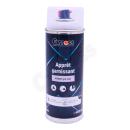 AG400CFiller spray primerLight grey - 400ml
AG400CFiller spray primerLight grey - 400ml -
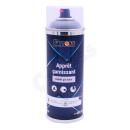 AG400FFiller spray primerDark grey - 400ml
AG400FFiller spray primerDark grey - 400ml -
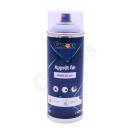 SP400CPremium fine primerLight grey - 400ml
SP400CPremium fine primerLight grey - 400ml -
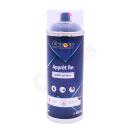 SP400FPremium fine primerDark grey - 400ml
SP400FPremium fine primerDark grey - 400ml -
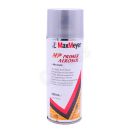 1.880.2000Spray Primer HP2000Light grey - 0.4L
1.880.2000Spray Primer HP2000Light grey - 0.4L -
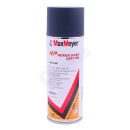 1.880.2006Spray Primer HP2006Dark grey
1.880.2006Spray Primer HP2006Dark grey -
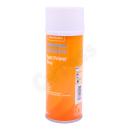 221878Spot PrimerGrey - 400ml Spray
221878Spot PrimerGrey - 400ml Spray -
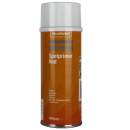 222710Spot PrimerSpray red 400ml
222710Spot PrimerSpray red 400ml -
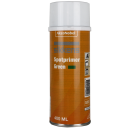 222712Spot PrimerGreen - 400ml Spray
222712Spot PrimerGreen - 400ml Spray -
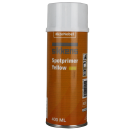 222714Spot PrimerYellow - 400ml Spray
222714Spot PrimerYellow - 400ml Spray -
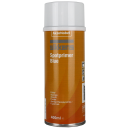 222715Spot PrimerBlue - 400ml Spray
222715Spot PrimerBlue - 400ml Spray -
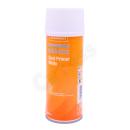 223947Spot PrimerWhite - 400ml Spray
223947Spot PrimerWhite - 400ml Spray -
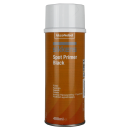 223948Spot PrimerBlack - 400ml Spray
223948Spot PrimerBlack - 400ml Spray -
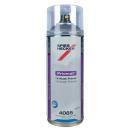 4085-DG400-NPriomat 1K primer newWash Primer Dark Grey 400ml
4085-DG400-NPriomat 1K primer newWash Primer Dark Grey 400ml -
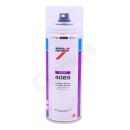 4085-LG400-NPriomat 1K primer newWash Primer Light Grey 400ml
4085-LG400-NPriomat 1K primer newWash Primer Light Grey 400ml
︾
Spray primer for your car or motorbike bodywork:
Spray primer is a product commonly used in car bodywork. It's a primer in spray form that offers a practical solution for preparing surfaces before painting. Here are some important things to know about Spray Primer:
1. Function of Paint primer :
The main function of the primer is to prepare the surface to receive the paint. It improves the adhesion of the final paint, helps even out the surface, and can help hide minor imperfections.
2. Types of Paint Primer :
There are different types of primer depending on specific needs:
Filling Paint Primer : To fill small imperfections and create a smooth surface.
Rust-inhibiting paint primer: Contains rust inhibitors to protect metal surfaces.
Plastic paint primer : Specially designed for plastic surfaces.
3. Use on different surfaces:
Spray primer can be used on a variety of surfaces, including metal, plastic, wood and sometimes glass, depending on the type of primer chosen.
4. Method of application :
Spray offers easy, even application. Simply shake the can, spray the primer onto the surface to be treated, respecting a recommended distance, and allow to dry before applying the paint.
5. Advantages :
Practical : The spray can of primer is practical, quick to use and does not require professional spraying equipment.
Economical : It allows precise use without excessive product wastage.
6. Precautions to be taken :
Protection : During application, it is essential to wear a respiratory mask, gloves and goggles to protect against fumes and particles.
7. Application steps :
Surface preparation: Make sure the surface is clean, dry and free of grease before application.
Spray : Apply the primer in successive thin coats, respecting the drying time between coats.
Drying : Allow the primer to dry completely before applying the final paint.
8. Paint compatibility :
Check the compatibility between the spray primer used and the type of paint you plan to apply next.
9. Storage :
Store the spray primer in a cool, dry place away from excessive heat and frost.
In conclusion, the Spray primer can is a practical tool in the bodywork field, offering an effective solution for preparing surfaces prior to painting. Follow the manufacturer's instructions for optimum results and be sure to take the necessary precautions when applying.
The differences between Carross Spray Primer and Carross Fine Spray Primer:
Trim primer and fine primer cans are two types of primer used in the car body industry. Each of these products has specific characteristics to meet particular needs when preparing surfaces before painting. Here are the main differences between a spray of filling primer and a spray of fine primer:
1. Appearance :
Topping spray primer :
Characteristics : The filling primer is formulated to fill and smooth small surface imperfections. It has a thicker consistency, which helps mask small irregularities such as light scratches, scuffs and small dents.
Objective : Its aim is to create a uniform surface by filling in small gaps to achieve a smooth, trimmed result.
Fine spray primer :
Features : Fine primer is designed to give a smoother, finer surface. It has a lighter consistency than filling primer.
Objective : Its main objective is to create a surface ready for final painting by minimising surface irregularities.
2. Coat thickness :
Spray primer filler :
Thickness : Because of its thicker consistency, filler primer can create a slightly thicker layer on the surface.
Thickness level: It is generally thicker than fine primer and provides a fuller coat.
Fine primer spray:
Thickness : Fine primer is designed to be thinner, creating a thinner layer on the surface.
Thickness level: This is often used to minimise the total thickness of coats on the bodywork, particularly important for repairs to small areas.
3. Finish level :
Spray primer :
Finish : Filling primer can leave a slightly grittier texture due to its ability to fill small imperfections.
Use : It is often preferred in cases where an ultra-smooth finish is not required.
Fine spray primer:
Finishing : Fine primer generally offers a smoother, finer finish, suitable where surface perfection is crucial before the final paint is applied.
4. Application and drying time :
Spray primer filler :
Application : Fewer coats may be required to achieve a well-filled surface.
Drying time : Drying time may be slightly longer due to the density of the primer.
Fine spray primer:
Application : It may require several thin coats to achieve the desired fineness.
Drying time: Drying time is often shorter due to the thinness of the coat.
In summary, the choice between a spray of filling primer and a spray of fine primer depends on the specific requirements of the bodywork job. The filling primer is often preferred for larger repairs, while the fine primer is used to achieve a smoother finish before the final paint job.